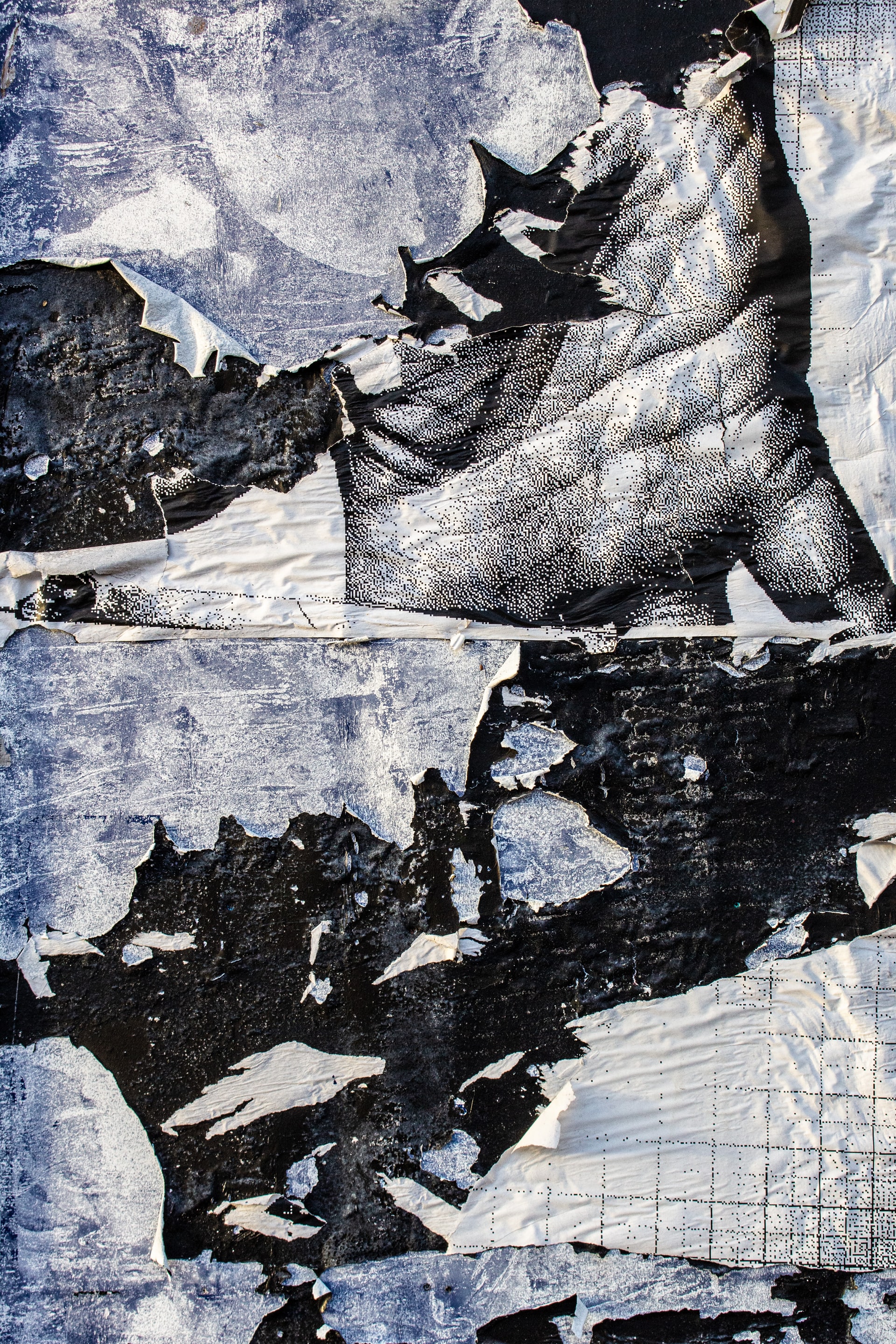A Place to be Together:
Cultivating Spaces of Discomfort and Not Knowing in Visual Analysis. The Collaborative Seeing Studio.
DOI:
https://doi.org/10.7146/ocps.v22i.126117Keywords:
Visual Research, Participatory Methods, Not Knowing, Collaborative Visual AnalysisAbstract
This article describes our transmethodological practice and the affective space of making and making sense of visual research in community. We purposefully embrace complexity and richness in visual data analysis, rather than seeking to reductively avoid doubt and uncertainty. To do this, we bring multiple ways of seeing together into a collaborative, poly-vocal construction. Our ‘studio’ is designed to be a safe space for risk and creativity. We are at different levels of experience and confidence, but we all learn from each other. Seeing collaboratively depends on translating our ways of reading visual material “out of our heads” and “into our shared space.” In the sense that we love what we are doing, we revel at opening ourselves to new possibilities. In-Progress: Victoria Restler Narrates a Collaborative Seeing Studio Session. Wendy Luttrell leads us into collaging as both metaphor and tools of Collaborative Seeing. We end with a brief reflection.
References
Banks, Marcus. (2007). Visual data in qualitative research, Sage: Thousand Oaks, CA.
Bakos, M., Bozic, R., & Chapin, D. (1987). "Children's spaces: Designing configurations of possibilities." In: C. Weinstein & T. David (Eds.), Spaces for children: The built environment and child development, New York: Plenum Publishing Co.
Becker, Howard S.(1995). Visual sociology, documentary photography, and photojournalism: It's (almost) all a matter of context, Visual Sociology,10 (1-2),5-14.
Becker, Howard S. (2002). Visual evidence: A Seventh Man, the specified generalization, and the work of the reader. Visual Studies, 17 (1).
Becker, Howard S. (1986). Doing things together: Selected papers. Evanston, IL: Northwestern University Press.
Campt, Tina M. (2017). Listening to images. Durham, NC: Duke University Press.
Espinet, I. (2017). Seeing and Being Seen: A multimodal inquiry of multilingual high school newcomers and their contributions to educational communities. [Unpublished doctoral dissertation]. The Graduate Center, City University of New York.
Fontaine, C. M. (2015).Growing Up Online: Identity, Development and Agency in Networked Girlhoods. [Unpublished doctoral dissertation]. The Graduate Center, City University of New York.
Fontaine, C. & Luttrell, W. (2015). “Re-Centering the role of care in young people’s multimodal literacies: A collaborative seeing approach” in Negotiating Spaces for Literacy
Learning: Multimodality and Governmentality, edited by M, Hamilton, R. Heydon, K. Hibbert, R. Stooke) Bloomsbury Books, 43-56.
García, O., & Wei, L. (2014). Language, bilingualism and education. In:Translanguaging: Language, bilingualism and education, Palgrave Pivot, London, 46-62.
Garoian, C. R. (2004). Curriculum and pedagogy as collage narrative. J. of Curriculum and Pedagogy, 1 (2), 25-31.
Goffman, Erving. (1961). Asylums: Essays in the social situation of mental patients and other inmates.” Garden City NY: Anchor
Goffman, Erving. (1979). Gender advertisements. New York: Harper and Row.
Keller, Evelyn F. (1983). A Feeling for the Organism: The Life and Work of Barbara McClintock. New York: Freeman.
Lico, S. & Luttrell, W. (2011). An important part of me: A dialogue about difference. Harvard Educational Review, 81 (4), 667-686.
Luttrell, Wendy. (2003). Pregnant Bodies, Fertile Minds: Race, Gender and the Schooling of Pregnant Teens. New York: Routledge.
Luttrell, Wendy. (2010) “’A camera is a big responsibility:’ a lens for analyzing children’s visual voices,” in Visual Studies, 25 (3), 224-237.
Luttrell, Wendy. (2016) “Children framing childhoods and looking back,” in J. Moss and B. Pini (eds) Visual Research
Methods in Education Research, Basingstoke, UK: Palgrave MacMillan, 172–188.
Luttrell, Wendy. (2020) Children framing childhoods: Working-class kids’ visions of care. Bristol, UK: Policy Press.
Luttrell, W & Clark, E. (2018). “Re-playing our Process: Video/Art Making and Research.” In: Qualitative Inquiry, 24 (10), 775-785.
Luttrell, W., Restler, V., & Fontaine, C. (2012). Youth video-making: Selves and identities in dialogue. In Milne,
E. J., Mitchell, C., & de Lange, N., Eds., Participatory Video Handbook. Latham, MD: AltaMira Press.
Mitchell, C., De Lange, N., & Moletsane, R. (2017). Participatory Visual Methodologies: Social change, community and policy. Sage: Thousand Oaks, CA.
Picower, B., & Mayorga, E. (2015). What’s race got to do with it? How current school reform policy maintains racial and economic inequality. New York, NY: Peter Lang.
Restler, Victoria. (2017). Re-visualizing Care: Teachers' Invisible Labor in Neoliberal Times. [Unpublished doctoral dissertation]. The Graduate Center, City University of New York.
Restler, V. & Luttrell, W. (2018) “Gaze interrupted: Speaking back to stigma with visual research.” In: The SAGE
Handbook of Youth Work Practice, edited by Pam Alldred, Fin Cullen, Kathy Edwards & Dana Fusco, 454-470.
Rose, Hilary (1983). Hand, Brain, and Heart: A Feminist Epistemology for the Natural Sciences in: Signs: Journal of Women and Culture, 9 (1), 73-90.
Silva, R. (2016). “Dropouts” Drop In: Re-Visualizing the “Dropout” Stereotype. [Unpublished doctoral dissertation]. The Graduate Center, City University of New York.
Smith, S. M. (2004).Photography on the color line: WEB Du Bois, race, and visual culture. Duke University Press.
Sturken, Marita and Cartwright, Lisa. (2018). Practices of Looking: An Introduction to Visual Culture. New York: Oxford.
Vasudevan, L. (2011). “An invitation to unknowing,”Teachers College Record, 113 (6), 1154-1174.
Downloads
Published
How to Cite
Issue
Section
License
From issue no. 1 2022 and onward, the journal uses the CC Attribution-NonCommercial- Share Alike 4.0 license (https://creativecommons.org/licenses/by-nc-sa/4.0/) The authors retain the copyright to their articles.
The articles published in the previous 37 issues (From Vol. 1, no. 1, 1999 to Vol. 22, No. 1, 2021, are published according to Danish Copyright legislation. This implies that readers can download, read, and link to the articles, but they cannot republish these articles. The journal retain the copyright of these articles. Authors can upload them in their institutional repositories as a part of a green open access policy.




